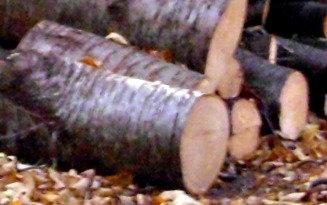Bio-Energy Applications: Moving towards a more Secure Sustainable Future
Bio-energy applications technologies
Derived from biomass, Bio-energy has a variety of applications such as electricity, heat, and fuels. Energy conversion technologies used in order to increase the use of this energy under environmentally safe conditions are thermal, and thermal chemical processes.
Combustion is the process of converting forestry and agricultural residues into heat and electrical power, while gasification is a process that heats biomass in an oxygen-starved environment to produce an hydrogen, and carbon monoxide gas.
Pyrolysis also converts forestry, and agricultural wastes and residues into an array of products and bio-oils, while thermal is the conversion of new, and used vegetable oils, waste greases, and animal fats into diesel fuels. Biological, and Bio-chemical conversion technologies use processes of fermenting starches and cellulose enzymes into bio-ethanol.
Bio-Power: a Renewable Electrical Resource
Bio-Energy

Bio-energy technologies that contribute to the production of electricity and heat are: Direct combustion, co-firing, anaerobic digestion, and gasification.
Direct combustion is the burning of waste wood products in conventional boilers, and Bio-power is produced when the burnt wood produces steam, spinning a turbine that in turn activates a generator.
Co-Firing is another technology used in coal-fired power plants to replace a portion of the petroleum-based fuel in high-efficiency coal-fired boilers with biomass. This process has been successful with most boiler technologies such as pulverized coal, cyclone, fluid bed, and spreader stoker units. Co-Firing can significantly reduce the sulfur dioxide emissions produced by the burning coal, and can be a cost efficient energy option for many power producers.
Anaerobic Digestion is a technology, that converts organic waste or feed-stock to bio-gas by fermentation. Bio-gas also named Methane gas can be used as a fuel or chemical feed-stock, and also burned in boilers to produce steam for electricity.
Gasification is a thermochemical process that produces a synthetic gas(syn-gas) by heating dry biomass in an oxygen-starved environment. It can then be used in combined-cycle gas turbines, in the latest natural gas power plants making them achieve much higher efficiency. These plants having 11,000(MW) of summer operating capacity, supplying power to the grid, produces about 1.4 percent of the U.S. electricity supply.
Also small biomass Gasification Systems can be used in isolated communities to provide electrical power, and Bio-power derived from biomass, in the future is projected to be the largest non-hydroelectric renewable resource of electricity in the U.S.
Bio-Fuels for Alternative Heat and Power
Bio-Fuels such as wood wastes, straw, manure, sugar cane, and other by- products from agricultural processes can be utilized to produce heat, or electricity. An example is Syn-gas which can be used as a substitute for furnace oil in direct heat applications.
Wood Pellets, cubes or pucks produced from wood shavings, bark, sawdust, and wood chips, (and collected from sawmills and wood manufacturing Industries) are processed into a solid fuel product. These pellets or cubes, can be used for residential heating and for power generation.
Bio-Char is another Bio-Fuel alternative which is made from agricultural waste, and it can be a substitute for wood charcoal as wood stocks are becoming scarce.
Alternative Transportation Fuels
Alternative Transportation Fuels derived from Biomass are mostly in liquid form. Two common fuels used for vehicles are Ethanol and Bio-diesel which are made through conversion processes which are biochemical and thermo-chemical. These processes involve pretreatment and hydrolysis which are obtained through enzymes and microbes of plant based feed stocks, such as corn and wheat grains. From this process Biomass sugars are then converted to Ethanol through fermentation.
The thermo-chemical process using cellulosic feed-stocks such as wood and forest products are rapidly heated to a temperature between 400-900C without oxygen, producing a syn-gas that is then converted to bio-alcohols, separated and purified to produce Ethanol, Methanol and other useful products.
Other forms of Bio-fuels are Green Diesel, Bio-fuel Gasoline, Vegetable Oil, Bio-ether, Bio-gas.
Ethanol being a clear colorless liquid alcohol is being used as a gasoline additive that will increase octane, preventing engine knocking and will improve vehicle emissions, and is also very important in engines that operate at a higher compression ratio in generating more power. As an Alternative Transportation Fuel, Ethanol as a 5-10% blend with gasoline will work in any vehicle without modification to boost octane.
Bio-diesel is produced from oils, fats, restaurant greases, and then processed into a liquid fuel which can be used in any diesel engine when mixed with mineral diesel. It is non-toxic and biodegradable, is safe to handle and to transport and the air quality and green house gas benefits are usually in proportion to the blend.
Addressing Issues
The U.S. Department of Energy's Bio-energy Technologies Office are addressing environment, social, and economics issues along the entire supply chain.
Natural Resources Canada is continuing research which will provide clean, and economical Bio-Energy Technologies that can be cost effective, reliable, and environmentally responsible alternatives to conventional energy productions.
These departments are committed to promoting the benefits of Bio-Energy while reducing potential negative impacts by not compromising the environment, quality, and availability of food, feed, fiber, and water.
For more Information see Biomass and Alternative Energies
See Bio-products and Bio-fuels,



